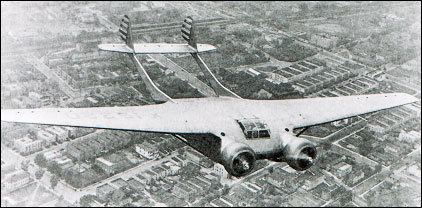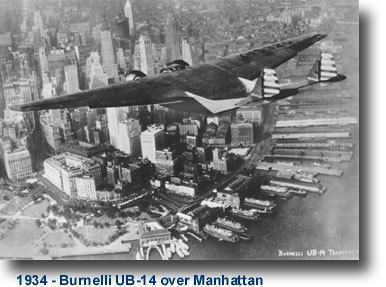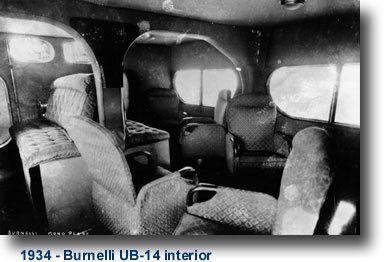Top speed 383 km/h Length 13 m | Wingspan 22 m First flight 1934 | |
 | ||
The Burnelli UB-14 was a 1930s American prototype lifting-fuselage airliner designed and built by Vincent Burnelli.
Contents
Design and development

Following on from his earlier designs Vincent Burnelli designed a commercial transport version using the lifting-fuselage concept. Burnelli's designs were based on the idea that an airfoil-section fuselage would contribute to the lift generated. The Burnelli UB-14 first flew in 1934, the airfoil-section fuselage was the centre-section of the wing. The aircraft had twin tailbooms and a widespan tailplane and elevator fitted with twin fins and rudders. The UB-14 had retractable landing gear and was powered by two Pratt & Whitney radial engines. An enclosed cockpit for the crew of two was located on the centre wing's upper surface. The cabin held 14 to 18 passengers.
Operational history

The first prototype, UB-14, was destroyed in a 1935 accident attributed to faulty maintenance on the aileron control system. Burnelli then designed and built an improved version, the UB-14B. A modified version of the UB-14B design was built under licence in the United Kingdom by Cunliffe-Owen Aircraft, powered by two Bristol Perseus XIVC radials as the Cunliffe-Owen OA-1. A contemporary photo shows the mockup of the original UB-14B, to be built by Scottish Aviation before bankruptcy. This design was to have had streamline inline engines. The OA-1 used radial engines.

In September 1936, Burnelli applied to the CAA for approval to fly a transatlantic flight with Clyde Edward Pangborn as the selected pilot.

The Cunliffe-Owen failed its airworthiness certification due to excessive takeoff run and poor workmanship. It was performance tested at the A&AEE Boscombe Down in 1939.

After appropriate work, in June 1941 Jim Mollison and an Air Transport Auxiliary crew delivered Cunliffe-Owen OA-1 G-AFMB to Fort Lamy, Chad. The aircraft was fitted out as a personal transport for General De Gaulle. It was later abandoned at Kabrit, and burned during VJ-Day celebrations.
Variants
Specifications (UB-14B)
General characteristics
Performance
Airfoils:
